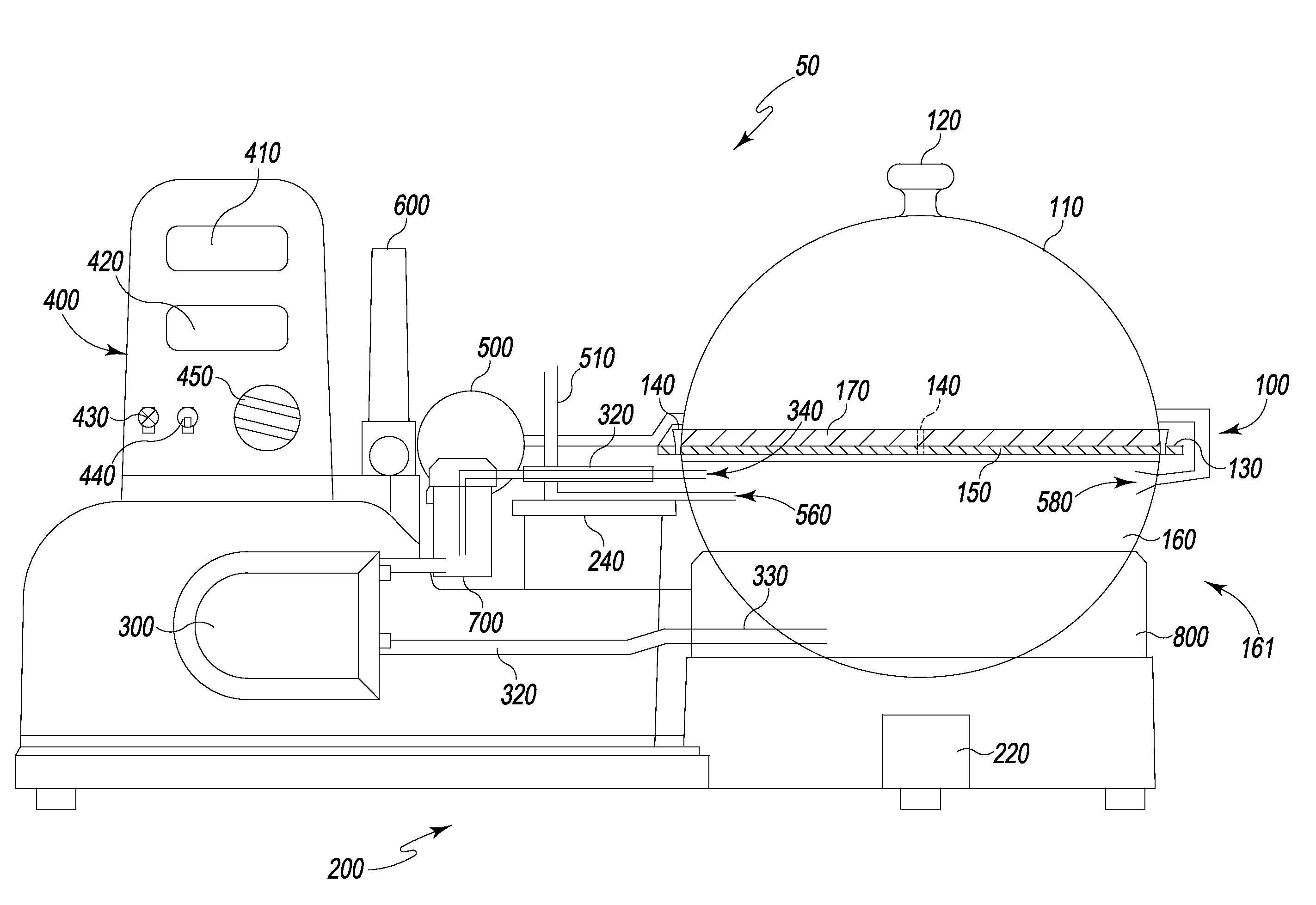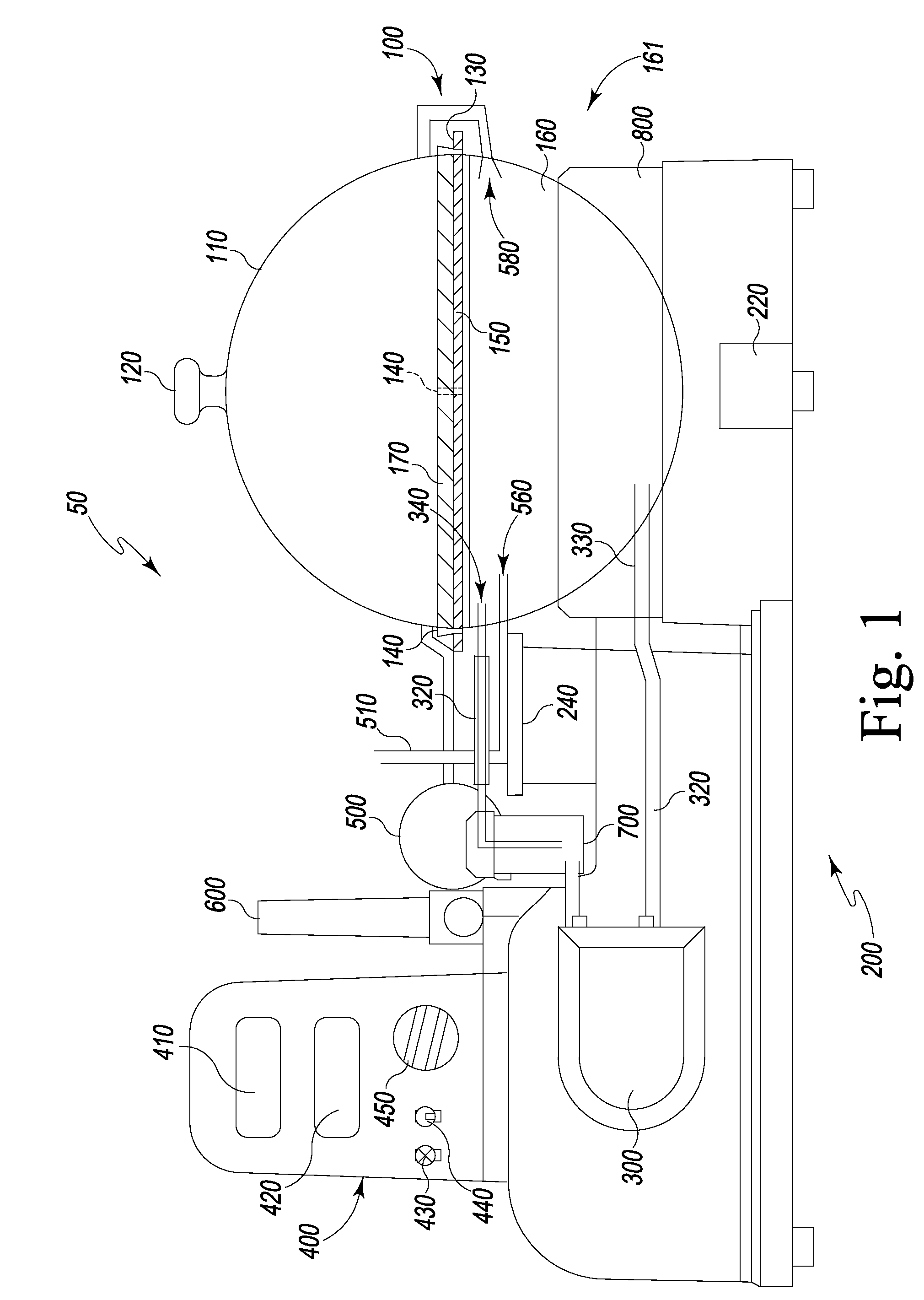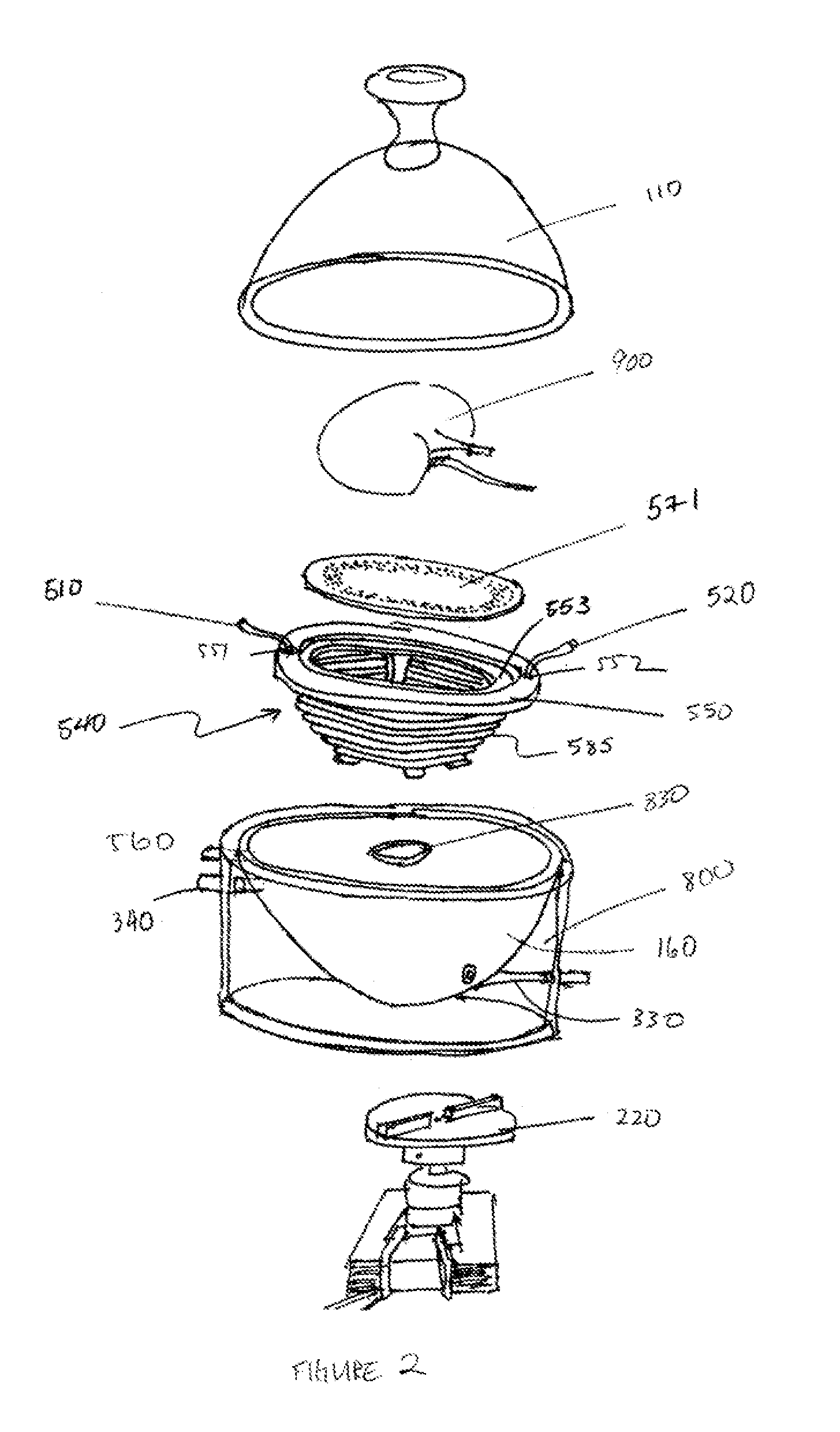Organ Preservation System
a technology of organ preservation and organs, applied in the field of organ transplantation and medical research, can solve the problems of disadvantage of known lack of versatility of prior art organ preservation systems, and inability to provide organ preservation devices
- Summary
- Abstract
- Description
- Claims
- Application Information
AI Technical Summary
Benefits of technology
Problems solved by technology
Method used
Image
Examples
example 1
[0085]Example 1 provides one method of using the organ preservation system 50 to perfuse a porcine kidney at midthermic and normothermic conditions.
[0086]Upon excision from the physiological environment, the kidney is cannulated at the renal artery. One liter of blood is retrieved and collected in 1 L closed cap containers with heparin. The kidney is flushed with 100 ml of cold Krebs solution, and venous outflow is collected. Kidneys are maintained on ice, in RS-I solution (pH 7.4) during transport back to laboratory.
[0087]The organ preservation device is equilibrated at room temperature prior to perfusion, and RS-I perfusate is primed with oxygen at greater than 20 mg / dL. The kidney is placed in the organ chamber, on the platform. Perfusion is maintained at 60 mmHg continuous pressure, and between 15° C. to 25° C. perfusion temperature. The ureter is cannulated, and a tubing for filtrate is attached. The kidney is perfused for one hour.
[0088]During perfusion, the flow rate, pressur...
PUM
 Login to View More
Login to View More Abstract
Description
Claims
Application Information
 Login to View More
Login to View More - R&D
- Intellectual Property
- Life Sciences
- Materials
- Tech Scout
- Unparalleled Data Quality
- Higher Quality Content
- 60% Fewer Hallucinations
Browse by: Latest US Patents, China's latest patents, Technical Efficacy Thesaurus, Application Domain, Technology Topic, Popular Technical Reports.
© 2025 PatSnap. All rights reserved.Legal|Privacy policy|Modern Slavery Act Transparency Statement|Sitemap|About US| Contact US: help@patsnap.com



